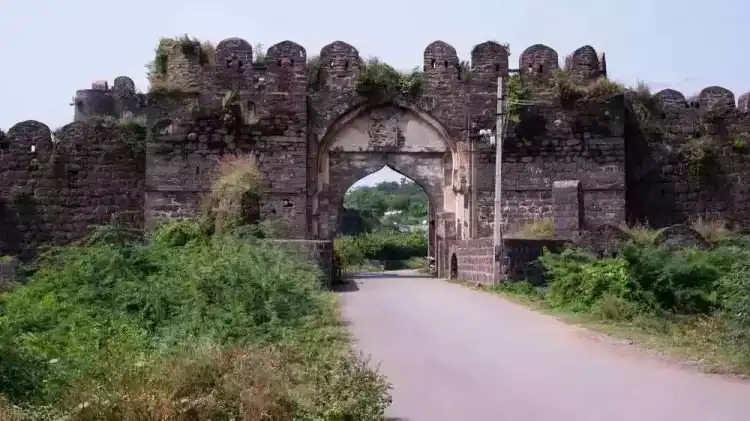A Comprehensive Overview of Kalaburagi District
Introduction
Kalaburagi, also known as Gulbarga, is a district located in the northeastern part of Karnataka, India. This district is renowned for its rich history, diverse culture, and unique geographical features. As one of the most historically significant regions in Karnataka, Kalaburagi offers a blend of ancient architecture, vibrant traditions, and a dynamic demographic profile.
Demography
Kalaburagi district boasts a diverse population, comprising various communities and ethnic groups. The major communities include Hindus, Muslims, and a smaller percentage of Christians and Jains. The district has a population of approximately 3.3 million people. The linguistic diversity is notable, with Kannada being the predominant language, followed by Urdu, Marathi, and Telugu. This multicultural demographic contributes to the district's rich cultural mosaic.
Culture
The cultural heritage of Kalaburagi is a reflection of its historical evolution and the confluence of various traditions. Festivals are celebrated with great enthusiasm, with Dussehra, Eid, and Diwali being the most prominent. Folk music and dance, such as Lavani and Dollu Kunitha, are integral parts of the local culture. The district is also known for its traditional arts and crafts, including bidriware, a unique form of metal handicraft that originated here.
Geography and Topography
Kalaburagi district spans an area of approximately 10,951 square kilometers. It is characterized by a varied topography that includes plains, hills, and river basins. The Krishna and Bhima rivers are the major water bodies flowing through the district, providing essential irrigation for agriculture. The climate is generally semi-arid, with hot summers, moderate monsoons, and mild winters.
Geography Diagram (Mermaid Syntax)
Cuisines
The culinary landscape of Kalaburagi is as diverse as its culture. Traditional North Karnataka cuisine dominates, with staples like jowar roti (sorghum flatbread), brinjal curry, and various lentil dishes. The region is also famous for its sweet delicacies such as Jolada rotti and Kardantu, a type of dry fruit sweet. The influence of Mughlai cuisine is evident in the popularity of dishes like biryani and kebabs, reflecting the district's historical connections.
History
Kalaburagi has a rich historical tapestry that dates back to ancient times. It was part of the Mauryan Empire in the 3rd century BCE and later came under the rule of the Chalukyas and the Rashtrakutas. In the medieval period, it became a significant center under the Bahmani Sultanate, which established its capital here in the 14th century. The district's historical monuments, including the Gulbarga Fort and the Jama Masjid, are testaments to its glorious past.
Poets and Authors
Kalaburagi has been a cradle for literary and intellectual talent. It is the birthplace of several renowned poets and authors, including the Sufi saint and poet Khwaja Banda Nawaz. His contributions to Deccan literature, particularly in Urdu and Persian, are celebrated. The district continues to inspire contemporary writers and poets who draw from its rich cultural and historical heritage.
Administration
The administrative structure of Kalaburagi district is organized into seven taluks: Afzalpur, Aland, Chincholi, Chittapur, Kalaburagi, Sedam, and Jevargi. The district administration is headed by a Deputy Commissioner, who oversees the implementation of government policies and development programs. The local governance includes municipalities and panchayats that manage urban and rural areas, respectively.
Economy
Kalaburagi's economy is primarily agrarian, with agriculture being the mainstay for a majority of the population. The fertile plains irrigated by the Krishna and Bhima rivers are conducive to the cultivation of crops like jowar, pulses, and oilseeds. The district is also known for its limestone and granite reserves, which contribute to the local industry. Additionally, the growth of educational institutions has spurred the development of a knowledge-based economy.
Educational Institutions
Kalaburagi is emerging as an educational hub in Karnataka. It is home to several prestigious institutions, including the Gulbarga University, which offers a wide range of undergraduate and postgraduate programs. The district also hosts numerous professional colleges, providing education in fields like engineering, medicine, and management. These institutions attract students from across the state and beyond, fostering a culture of academic excellence.
Tourism
Tourism is an important sector in Kalaburagi, with visitors drawn to its historical monuments, religious sites, and natural beauty. The Gulbarga Fort, with its imposing architecture and historical significance, is a major attraction. The Khwaja Banda Nawaz Dargah is a revered pilgrimage site for Muslims. The district also boasts natural attractions like the Narayanpur Dam and the scenic Yadgir hills, offering opportunities for outdoor activities and relaxation.
Conclusion
Kalaburagi district, with its rich history, diverse culture, and vibrant economy, stands as a testament to the enduring legacy of its past and the promise of its future. From its ancient monuments to its thriving educational institutions, Kalaburagi offers a unique blend of tradition and modernity. As we continue to explore and document the myriad facets of this remarkable district, we celebrate its contributions to Karnataka's cultural and historical heritage.
